What You Need to Know for Visiting Pearl Harbor

When our family planned a trip to Hawaii, I knew that the one thing I wanted to do on the island of Oahu was visit Pearl Harbor.
Pearl Harbor is one of the most iconic sites in American history. On the morning of December 7, 1941 Japanese pilots conducted a surprise attack on the U.S. Naval Base, crippling many of the Navy ships docked in the harbor. Tragically, three of those ships, the U.S.S. Arizona, the U.S.S. Utah, and the U.S.S. Oklahoma were destroyed with massive loss of life. The surprise attack initiated the United States’ entrance into World War II.
Here is everything you need to know before your trip to the Pearl Harbor National Memorial.
What You May Bring in to the Memorial
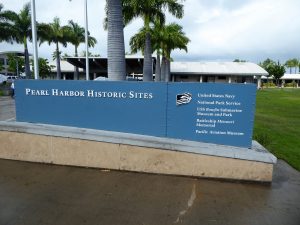
Due to security precautions, there are a number of items you cannot take in to the Pearl Harbor Memorial Site. Prohibited items include purses and backpacks or any large bag that is not clear plastic.
Cameras and Electronic devices are allowed, however, they cannot be in cases. We left our camera case in the car.
Since this is a memorial and graveyard, you are advised to wear appropriate/respectful clothing. This of course, does not mean you must arrive in a dress or a suit and tie. We wore shorts and T-shirts, but we made sure our clothes were appropriate for the visit.
You will go through a security checkpoint before entering the Pearl Harbor Memorial.
Make This Your First Stop

After you enter the site, you’ll want to proceed to the ticketing counter for the U.S.S Arizona. You get free, timed tickets distributed on a first-come, first-served basis. A limited number of tickets are available each day, and they can run out on busy days. Our ticketed time was about an hour after entering the site. So we visited other parts of the National Memorial first.
After you’ve secured your U.S.S. Arizona passes, you’ll want to go to the adjacent ticketing queue for paid attractions. You may purchase tickets to tour the Bowfin Submarine (on site), the U.S.S. Missouri and the World War II Aviation Museum (a shuttle bus will pick you up and drive you to these sites on Ford’s Island).
The U.S.S. Arizona Tour
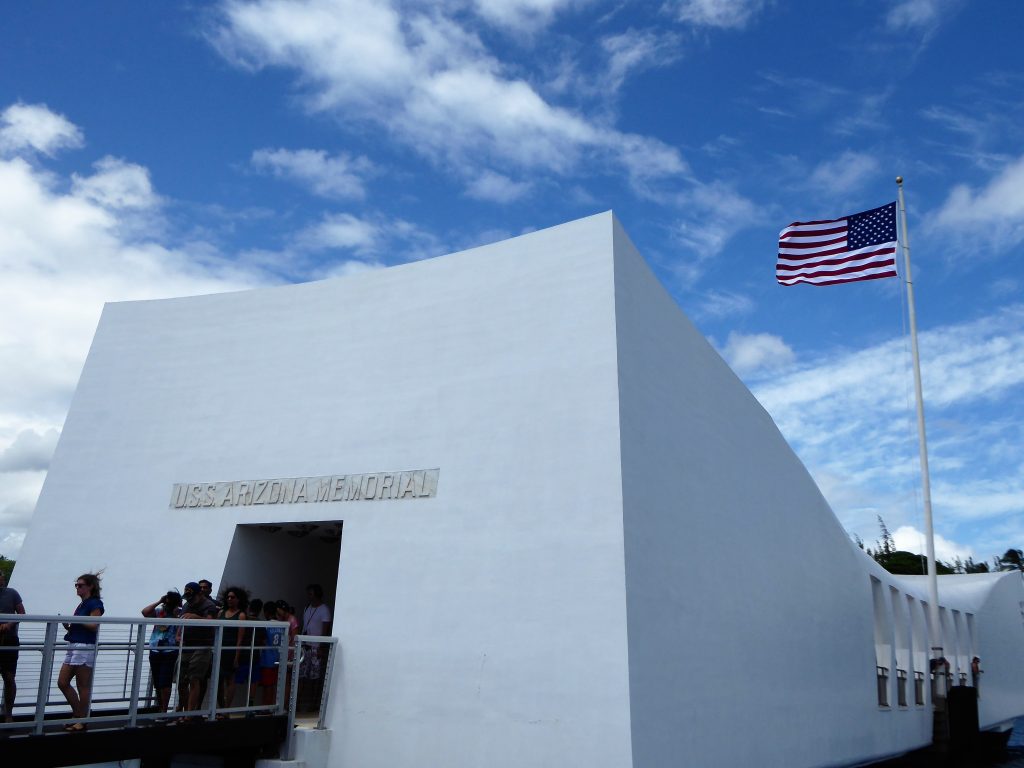
This is Pearl Harbor’s free tour. After you’ve secured your tickets as soon as you enter the park, you’ll head to the theater at your appointed time. The tour of the U.S.S. Arizona lasts 75 minutes. It begins with a Park Ranger explaining the agenda of the tour while giving some background information.
After the Ranger talk, you’ll head in to the theater for a 23-minute movie revealing the timeline of that fateful day. The movie is emotionally moving, and while the imagery is not overtly graphic, some children may find it disturbing.
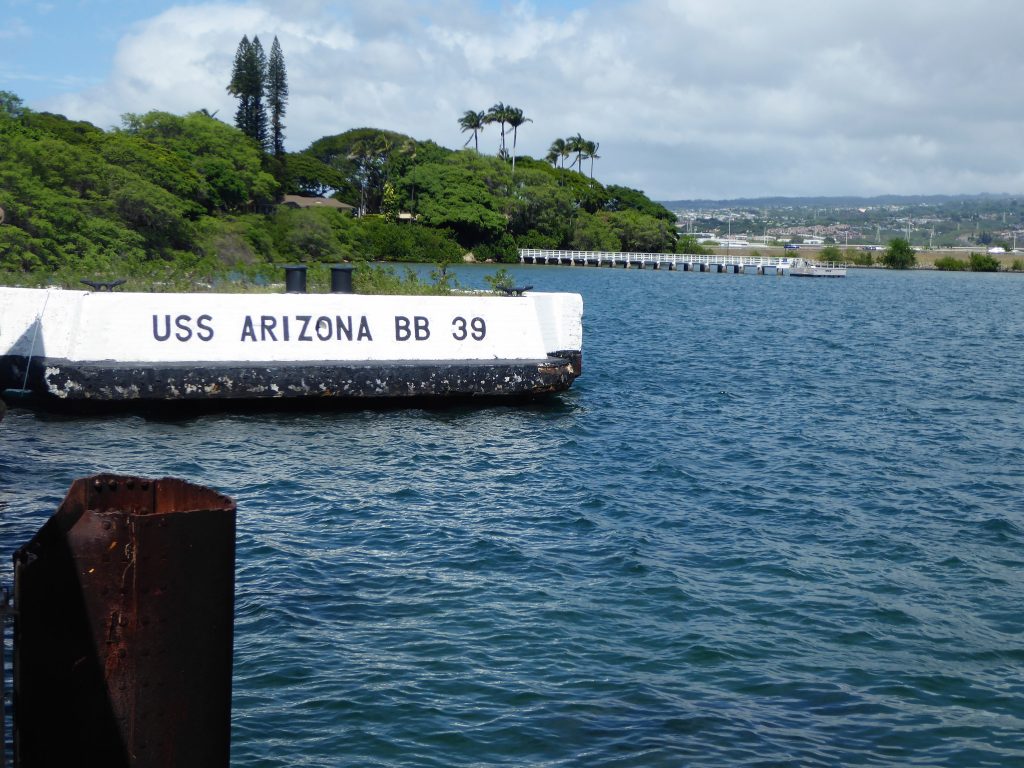
Following the movie, you’ll head out the side doors where you’ll meet the U.S. Navy Ferry which will take you to the memorial site. The Navy officers instruct you not to take pictures during the ferry ride. This is an active Navy base and the site where thousands lost their lives. So we respected the rules of our Navy crew. Still, we saw many visitor’s ignore this command.
As you ride over to the monument site, you pass markers showing where each battleship was stationed on the Sunday morning of the attack.
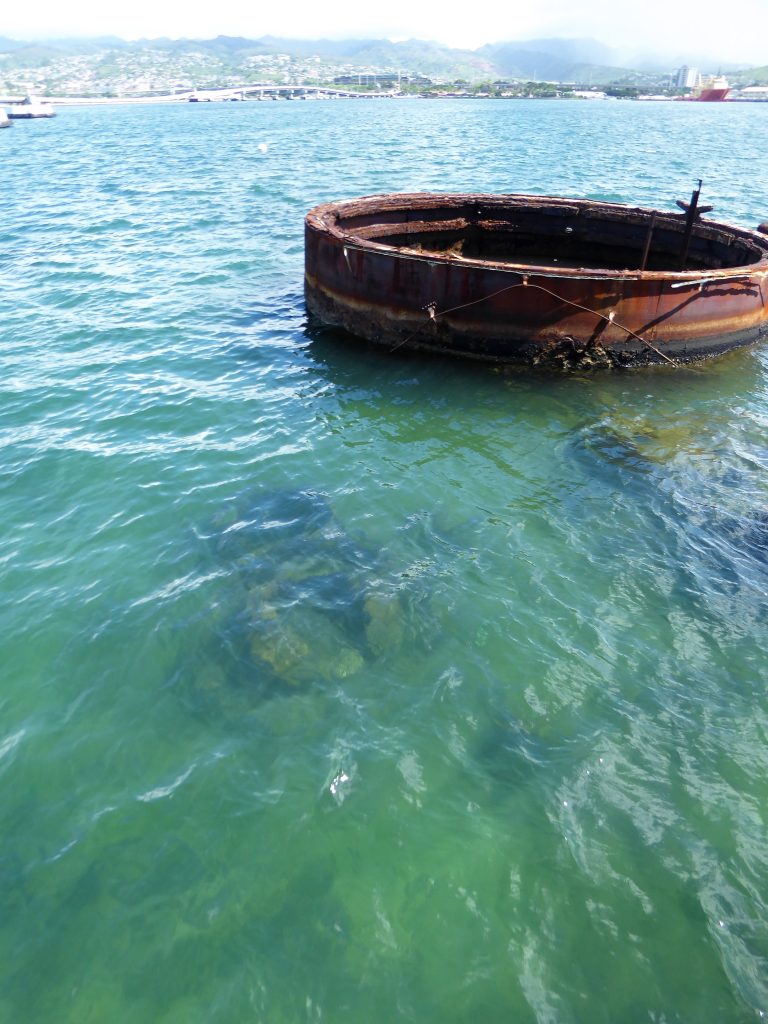
The ferry takes you to the memorial site, which sits directly over the sunken Arizona. It is a sobering experience as you draw close to the vessel, and can see it’s outline.
We spoke with our kids about respectful behavior a few times before visiting the Memorial. Our kids have always been very respectful when visiting memorial sites, and this was no exception. Still, it is worthwhile to speak with your kids before a visit so they know what to expect and how they should behave.
At the Monument
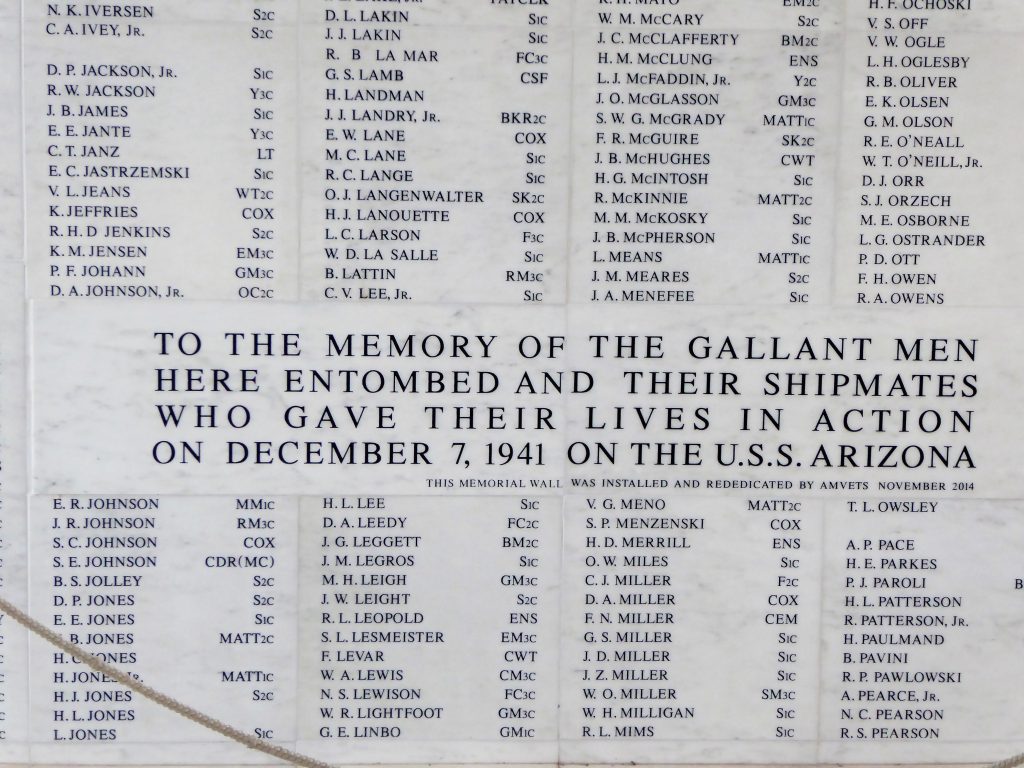
Once the ferry drives you over, you’ll unload and head into the monument. During our tour, everyone was rather quiet, whispering on occasion.
Everyone respectfully formed queues waiting their opportunity to get to the front of a line to see the battleship more clearly or to read the names on the memorial wall.
In addition to the memorial wall, listing the names of the 1,177 sailors who died on December 7, 1941, you also see another memorial stone, listing the names of the survivors who requested their bodies interred at the Arizona Memorial.
You will spend about 15 minutes at the memorial. Rangers will direct you when it’s time to line up to load the ferry back to the park site. It’s not a lot of time at the memorial. We would have liked a little more time to stay on the memorial and see all there was to see (plaques, etc.).
What to Expect at the U.S.S. Bowfin Submarine
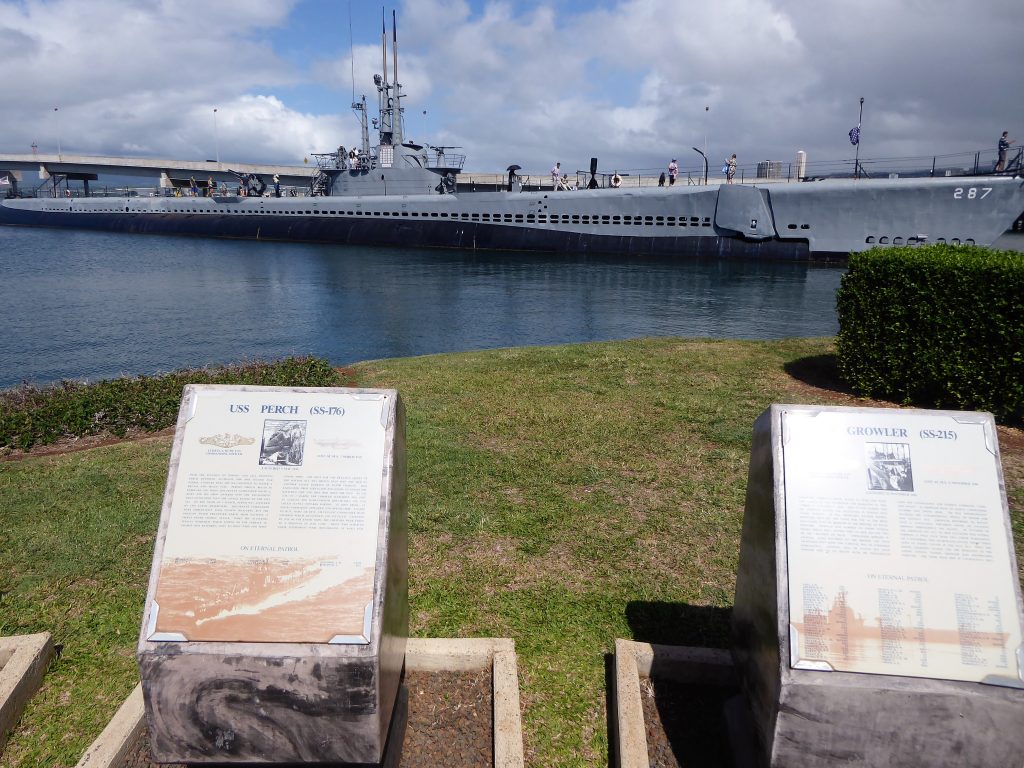
The U.S.S. Bowfin submarine rests in the harbor. The Bowfin has a storied history. It was launched on December 7, 1942, exactly one year after the bombing at Pearl Harbor. The Bowfin was one of the major submarines players during the War in the Pacific.
When you arrive at the Bowfin, you will be given an audio set for your tour of the sub. The audio tour automatically advances as you enter each section of the vessel. Depending on the length of each audio section, there were times when members of our family were waiting on other member’s audio to finish. But, in general, this was a great way to tour the submarine.
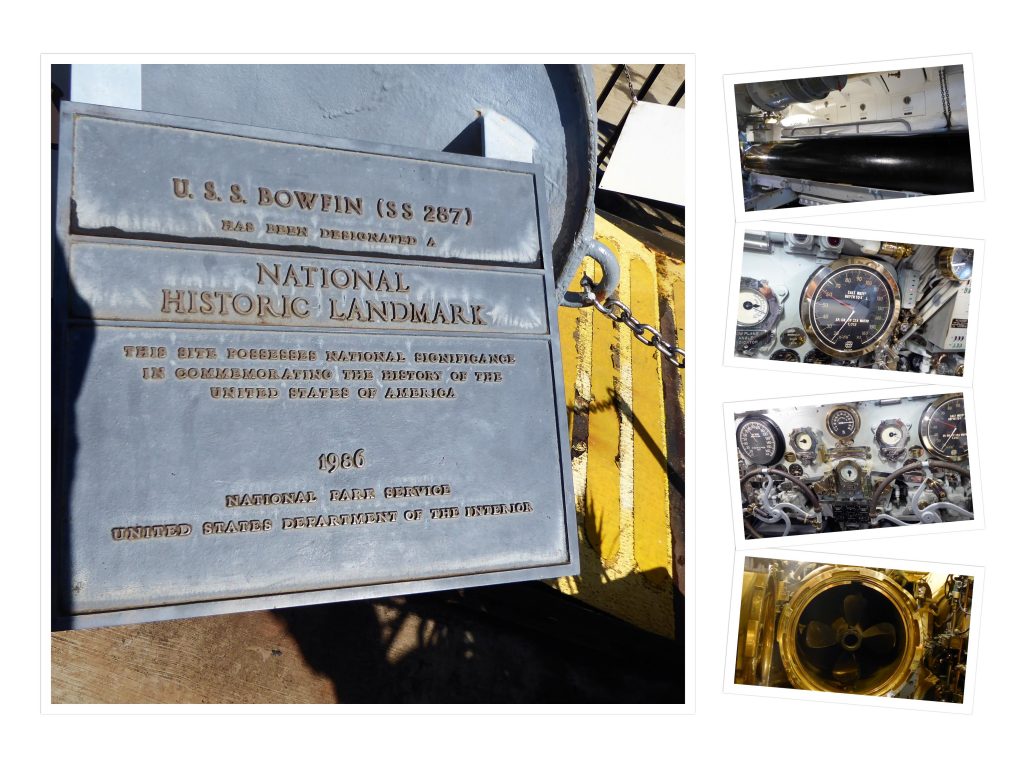
We were amazed by the close quarters in the sub. It takes a special person to live and work in these conditions.We left impressed by those who had done so.
Most impressive were the sleeping quarters. Officers had cramped quarters. But the non-officers had even more challenging arrangements. Some of the cots rested directly above torpedoes later used in operations. That’s right. These men slept on top of the loaded bombs. I don’t know how anyone could sleep well with those arrangements.

One of the more engaging audio stories recounted a time when the Bowfin released one of the torpedoes into the ocean. The torpedo went awry, zigzagging near the sub, and they lost track of it The torpedo did not engage, but the sailors could not determine where the torpedo was. It was a tense and intense time when the sailors worried they would run into their own loaded torpedo. While they skirted the disaster, we listened to the story with bated breath.
Near the location where the Bowfin is docked lies a memorial for those submarines lost during WWII. My son and I walked through the Waterfront Memorial, looking at the dates the subs were commissioned, the dates they were lost, and the number of men who are now on “eternal patrol.”
Taking the Tour of the U.S.S. Missouri
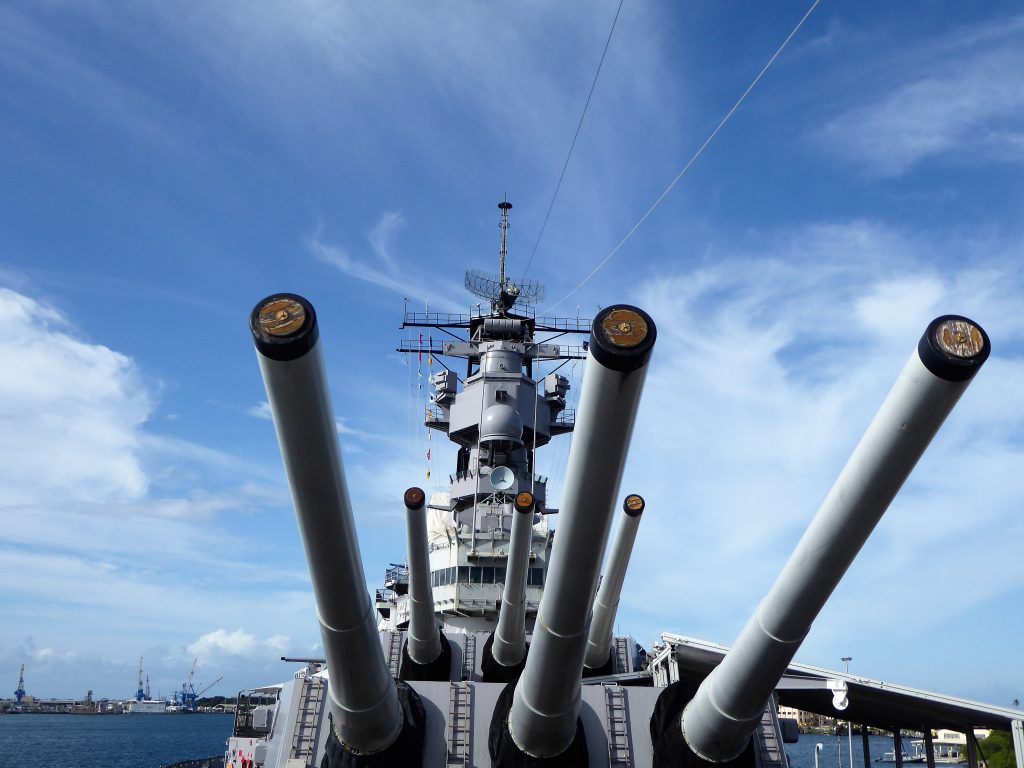
The U.S. entered WWII with the bombing of Pearl Harbor and the loss of the U.S.S. Arizona. The U.S. involvement in the war ended when Japan signed surrender documents in the Bay of Japan in 1945. These documents were signed aboard the U.S.S. Missouri, now docked next to the Arizona at Pearl Harbor. The two ships serve as bookends for U.S. involvement in WWII.
To get to the Missouri, you’ll need to board a shuttle bus which takes you to Ford Island. This is still an active Naval Base, so there are many security precautions in place. As such, you are unable to take pictures while on the bridge heading to Ford Island.
Once on the island, the bus drops you off at the U.S.S. Missouri. Here, you can take a 30-minute guided tour. But, you can also take a self-guided tour of the vessel. We chose to do both.
The Guided Tour of the Missouri
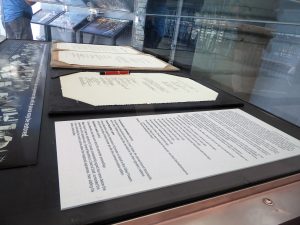
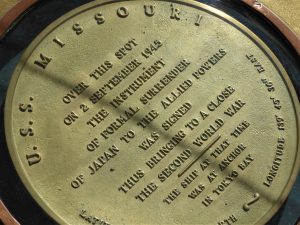
The guided tour helped us understand the size of the battleship and what happened during a military engagement. We also learned a lot about the treaty signing on board the ship, and an amazing story of a Japanese fighter plane that crashed into the Missouri.
One of the great benefits of the guided tour is that you get a lot of commentary about the peace treaty signing. Sure, you can piece it all together without the guided tour. But we liked having the guide give us more color and insight into that day in the Bay of Japan. Our guide also gave a dramatic rendering of the Japanese plane swiping the side of the Mo.
Self-Guided Tour of the Missouri
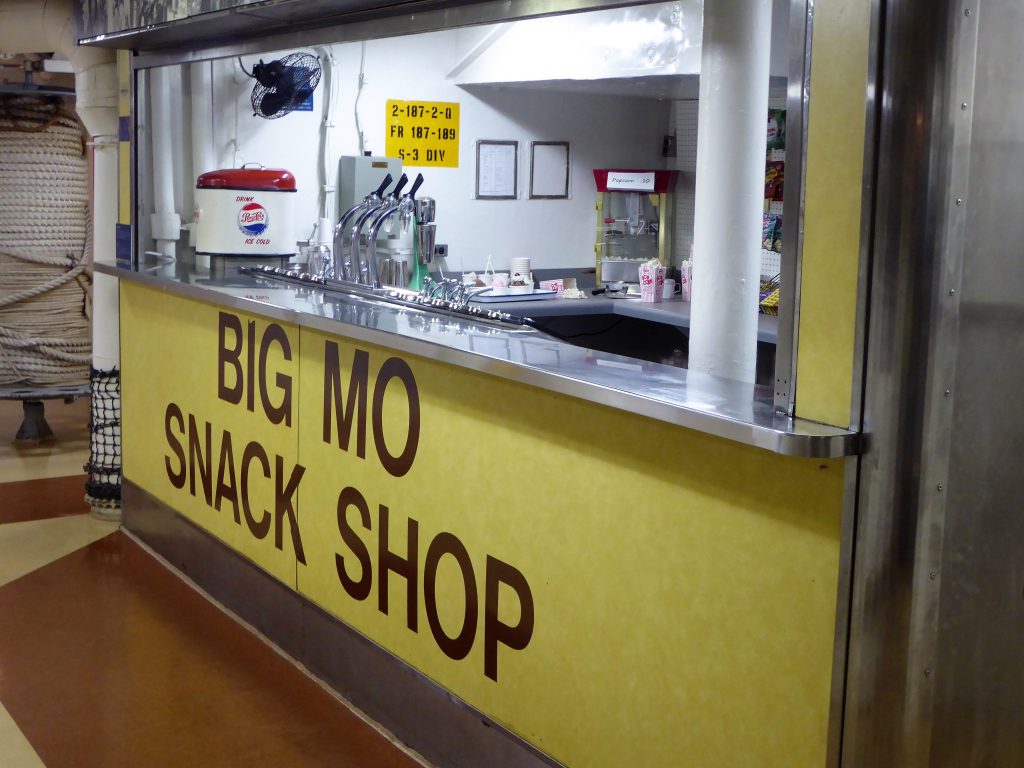
After our guided tour, we seized the opportunity to go below deck and tour the battleship in a self-guided tour.
It was fun to see the accommodations aboard the ship, from the galley to the officer’s quarters and all points in between.
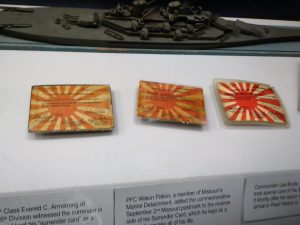
The Missouri has a long history as a battleship. Not only was it involved in WWII, but also in the Korean Conflict and the Gulf War. In fact, it was the last active battleship used by any country, when it was de-commissioned in the 1990s. After the de-commissioning, the battleship came to Pearl Harbor to become a museum and part of the Pearl Harbor National Memorial.
We were most interested in the memorabilia preserved on board the Missouri. We saw Christmas cards sent to loved ones with greetings hopeful that the war would end in the coming year.
Some of the more moving stories and memorabilia centered around the signing of the peace treaty. All those on board the battleship during the peace treaty signing received a surrender card. It was an emotional experience to read how those men carried the surrender cards throughout their lives to commemorate their time on board the ship on that fateful day.

Also of interest to us were the artifacts from the Japanese plane that clipped the U.S.S. Missouri. What a frightful event for all of those on board that day.
During our guided tour, we heard about the story. The 19-year-old Japanese pilot perished somehow before his plane swiped the battleship. Amazingly, one of the ships cooks captured a picture of the plane as it ran into the port side of the ship (which you can see on board).
The American sailors, out of respect for the pilot, gave him a proper burial at sea. They did not have a Japanese flag. So they painted the flag emblems onto bed sheets, wrapping the pilots body in this makeshift flag. Next morning, they saluted him as gave him a burial at sea. That was one story that deeply resonated with our kids.
The self guided tour also stops at a video screening room where we could watch History Channel documentaries about World War II. Some of these images were really intense for our kids (and for us). Use your best judgment for younger kids watching the video.
Final Thoughts
Pearl Harbor gave our family a better first-hand understanding of the U.S. entrance and involvement in World War II. We really appreciated having both the Arizona and Missouri on site so that we could see those bookends to the U.S. involvement. The Bowfin tour also gave us a deeper understanding in to this moment in history.
Finally, the site is a great place for people of all nationalities to visit. Throughout our visit to the site, we were reminded by Rangers, tour guides, and on placards that the site evokes many different feelings to different people. Regardless of nationality (and during our visit we saw and heard many different people represented), one can visit Pearl Harbor and be greatly moved by the stories of tragedy and triumph, of fear and hope, of perseverance and resolve.
Hopefully, everyone who visits Pearl Harbor leaves a better person.
You Might Also Enjoy:
Our Photo Guide to Mount Rushmore.
Our Guide to visiting Lower Manhattan, including the Statue of Liberty.
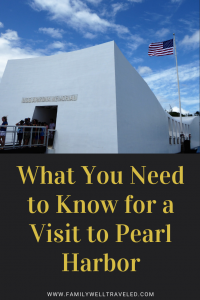

All photos and content are by Family Well Traveled and use of photos or content without permission will result in legal action.

1 thought on “What You Need to Know for Visiting Pearl Harbor”